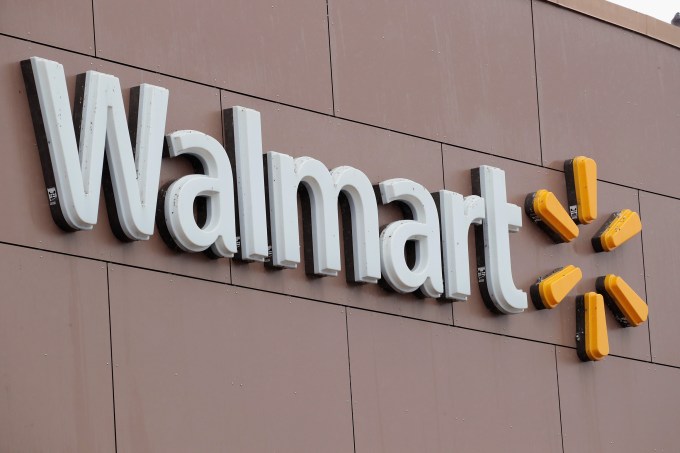Uber’s announcement of its IPO pricing earlier today came with a $500 million belated Easter egg. The payments giant PayPal is making a half-billion-dollar investment at the company, paying $47 per share, which gives the company a valuation of $78.8 billion (in the middle of the range of Uber’s IPO pricing of $44-$50 per share).
Neither Uber nor PayPal gave much detail about the the $500 investment. Uber’s S-1 and a short statement on LinkedIn from PayPal’s CEO Dan Schulman both used the same wording, noting the deal would help the two work on “future commercial payment collaborations, including the development of Uber’s digital wallet.” So what’s actually going on here?
The deal clearly gives Uber another significant piece of financial padding going into its public listing — and it needs it, with a loss of $1 billion in the last quarter alone — as well as a closer commitment from one of its existing payments partners. But it’s also a significant move for PayPal as the company works on building the next stage of its financial services empire.
The company — untethered from eBay after first spinning out from the marketplace company in 2014 and eventually losing its status as its primary payments provider last year — has been building out a profitable business on its own steam, reporting 227 million accounts earlier this week with revenues up more than 30 percent to $4.13 billion for the quarter.
At the same time, it’s also been slowly laying the groundwork for how it can leverage deals with other companies to boost that growth even more.
There have been a number of smaller strategic investments in a range of startups including European startups like savings company Raisin and cross-border payment startup PPRO, as well as Asian startups Pine Labs and Viva Republica. However, PayPal took a much bigger bet this year that, like the Uber investment announced today, underscores how it is also evaluating and buying into larger marketplaces, too.
In March, it made its biggest investment as an independent company to date, putting $750 million into Argentina’s MercadoLibre, an e-commerce powerhouse that acts as a kind of eBay of Latin America, with auctions and a marketplace for buyers and sellers to connect, and a payments system called MercadoPago.
Uber-size me
The eBay similarity probably made MercadoLibre a natural partner for PayPal.
But more likely, I think the investment is part of a super-sized next step modelled on that eBay relationship — a way for PayPal to build its network beyond what it can build on its own steam, by catching a ride on other high-growth companies to pick up some of their network effects.
This is, in fact, something that Schulman talked about just days ago in PayPal’s earnings call.
“We see international as a tremendous opportunity space for us. And if I take a step back, we’re willing to invest in companies or acquire companies that we believe advance our strategic agenda,” he said. “We do want to be the leading global digital payments platform, and that means looking across the world at who are the leading players there and how might we partner together in some way to take our respective platforms, the respective number of customers we each have. MercadoLibre, between their marketplace and MercadoPago, their payments infrastructure, they have 200 million-plus customers themselves. And so you put that together with ours, you have almost 500 million customers… there are companies like MercadoLibre where a strategic partnership may make sense for us, and they allow us to expand our presence into a geography or a set a capabilities. And by the way, there may be other companies around the world that offer similar strategic options for us and we’d be willing to explore partnerships, very akin to what we did with MercadoLibre.”
The fact is, though, there aren’t really any more big e-commerce marketplaces left to partner with. Amazon is PayPal’s arch nemesis, Alibaba has Alipay, and the eBay ship has sailed. (Walmart, incidentally, is also a PayPal partner and I’ll be interested to see what develops there, including with Walmart’s own big e-commerce marketplace purchase, Flipkart.)
In the meantime, we’re seeing a new opportunity emerge with high-growth companies that are building strong commercial relationships with their customers, in the form of these large transportation-on-demand providers, like Uber.
There are three areas where PayPal is hoping that its Uber investment will play out (and hopefully pay out).
The first of these will be increasing transactions. Today, PayPal is Uber’s leading payment provider in the US and Australia, and with this investment, from what I understand, it will be looking to ramp up and take on that role in more countries in the months ahead. That will pose an interesting competitive threat to the other payment companies that work with Uber such as Adyen, which itself had a very successful public markets debut earlier this year and lists Uber as one of its biggest customers.
The second will be helping to build and run Uber’s own efforts in providing payments and managing transactions. Right now, the main manifestation of that is Uber Cash, the digital wallet that Uber launched in September that lets users top up Uber accounts with money that they can use on Uber services, sweetening the deal to lure more users to this by offering discounts.
A big reason why Uber is building Uber Cash is because once it can control the flow of the money itself, it doesn’t have to pay transaction costs on those purchases, and along with another product it introduced in 2017, the Uber Visa Card, it becomes a gatekeeper of its customers’ spending.
This might sound familiar: it is similar to the model PayPal built with in its own service. It’s not clear how the two will work together on this, whether it will be simply an integration so that PayPal will become one more way to top up your Uber Cash, or whether PayPal will help power the whole service.
The latter leads to the third way that PayPal and Uber might be working together down the line.
PayPal today has 22 million merchants on its platform, and an integration with Uber — through Cash and its Card could become another opportunity to give those merchants an opportunity to sell: just as people can pay today for something on a site with PayPal, one idea that’s being considered is how to expand the Uber Cash network to allow people to pay for more than just Uber rides and Uber Eats.
“Uber has a large, engaged user base and that presents an opportunity to cross sell other services using Uber Cash and Uber Card,” one source told me. “The bigger vision is to be a network of networks, connecting these leading marketplaces and payment networks to see more growth in commerce.”
Grabbing its chance
Uber is just one of the transportation/new marketplace companies that PayPal has been looking at. From what we understand, PayPal plans to make more investments of this kind in other large e-commerce and marketplace businesses, to the tune of between $1 billion and $3 billion annually.
As part of that, PayPal is considering an investment in another big transportation-on-demand provider, Grab in South East Asia.
In March, we reported that Grab was talking to PayPal to take an investment in its business — a deal we understand from sources is still in play.
The interest in Grab is similar to what PayPal sees as its opportunity with Uber. The investment would be specifically in connection with the company’s financial services unit. This includes GrabPay, a service the company has built as a payments hub for more than just rides and other services provided by Grab directly, but also linked to online and offline merchants in the markets where it operates.
Uber has yet to build out any kind of a network like GrabPay, but it’s interesting that it has dabbled in lots of areas where it leverages its existing user base to expand its commercial network. They include building an ad network, plans for a “content marketplace“, and local offers with Visa for goods and services at your destination or close to it.
PayPal, being the holder of a vast amount of transactional data and understand about how people spend their money, has become a clever reader of signals and subsequently how a financial empire might develop.
“There aren’t that many other established payment ecosystems, but these ride sharing companies are particularly well positioned because of their user numbers and engagement,” our source said. Investments like the one in Uber gives PayPal a chance at a deeper relationship Uber, and a seat in its vehicle.

Source: Tech Crunch





